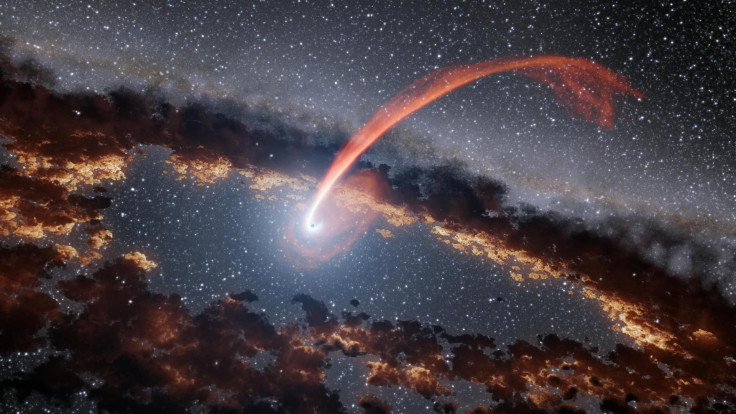6 Dangerous Objects Lurking Near Earth
Space is a dangerous place for humans. There’s no air, it’s ridiculously cold and things are really far apart, meaning help would be hard to come by in an emergency. But space is also dangerous for things that are much larger, like planets. As Earth innocently swings along its orbit, there are objects lurking out there that could kill our dear blue marble — and all of us on it.
The sun in the sky
We need the sun’s heat and light to survive, but its power can also kill us. Of course, on a personal level, its rays can cause skin cancer, but on a more planetary level, material the sun is shooting out toward us can wreak havoc on the Earth’s atmosphere and magnetic fields. The more benign result of the solar wind creating a geomagnetic storm is an aurora, a colorful display in the sky at northern latitudes caused by the solar material interacting with gases in our atmosphere. But those storms can also damage satellites, make GPS systems and radio communications fail and interfere with electrical grids on the ground, all of which can have potentially deadly consequences for humans.
Then there’s the matter of the sun’s death. It’s not a large enough star to explode in a supernova, but it still will vaporize us one day, several billion years from now, when it swells up into what’s called a red giant. How selfish.
Read: Is This a Black Hole or a Supernova?
A big boom
You know what will explode in a supernova? Lots of other stars. Any star that accumulates enough mass to explode and is closer to us than 50 to 100 light years would be deadly for Earth. EarthSky says there aren’t any old, massive stars close enough to explode in a Type II supernova, which happens when those huge stars collapse. But a Type I supernova occurs when a white dwarf star collapses, and there might be hundreds of them near our solar system — it’s hard to know exactly because they are difficult to detect.
Space’s version of a vacuum cleaner

Black holes are the universe’s vampires, preying on and sucking up anything that comes too close, even a star. And consuming those objects only makes them stronger.
There is a supermassive black hole at the center of our galaxy, the Milky Way, much like there are at the centers of many galaxies. It is about 25,000 light years from Earth, so our planet is far out of the grasp of its gravitational pull. There are closer black holes, however.
The closest one to Earth that we know of, according to Universe Today, is an object called V616 Monocerotis, about 3,000 light years from us. But because we can’t see black holes directly, only detect them by their effects on other objects in the starry sky, it’s entirely possible there are many more lurking out there, possibly even relatively close to us, and we just don’t know it.
Our one friend
The moon is playing the long game. It seems to be revolving around Earth without a care in the world, but all the while it is slowly backing away from the planet — about 1.6 inches every year, to be exact. But the moon’s position in our sky matters, as Earth’s natural satellite affects the tides in the ocean and the speed with which the planet rotates, to name a couple of lunar side effects.
It could also become dangerous when the sun turns into a red giant, with that process bringing it closer to Earth and tearing it into a ring of debris that could pelt the planet’s surface.
Read: Stunning NASA Art Imagines Our Universe
‘Roid rage
Asteroids pass by Earth all the time. In the first week of June alone, NASA projected several close approaches, one of them passing by at roughly the same distance from us as the moon. Most asteroids are harmless, simply looking like stars slowly moving through the night sky, but it only takes one to do serious damage. Just ask the dinosaurs — oh wait, you can’t because they are all dead. About 66 million years ago an enormous asteroid crashed into Earth and wiped them out and also changed the structure of Earth. NPR reported the impact made the planet move fluidly, almost instantaneously carving a hole into the surface and thrusting up mountains around it. Researchers have said the asteroid hit around southern Mexico, hard enough to create an earthquake at least as far away as Colorado.
Lots of trash
There are tons of garbage orbiting the Earth, the cumulated remains of satellites, launchers and other space equipment dating back to the late 1950s. The pieces number in the millions, and some of them are the size of a bullet but moving 10 times faster than one. NASA estimates perhaps 20,000 pieces are bigger than a softball, and 500,000 are bigger than a marble. But even at a small size, moving so quickly means they can be deadly, or cause critical damage to orbiting bodies like the International Space Station. And when the pieces collide with one another, they break off even more and add to the mess. Earth’s low orbit is already choked with trash, and the orbiting parts could potentially cause issues for future space missions.
© Copyright IBTimes 2024. All rights reserved.





















